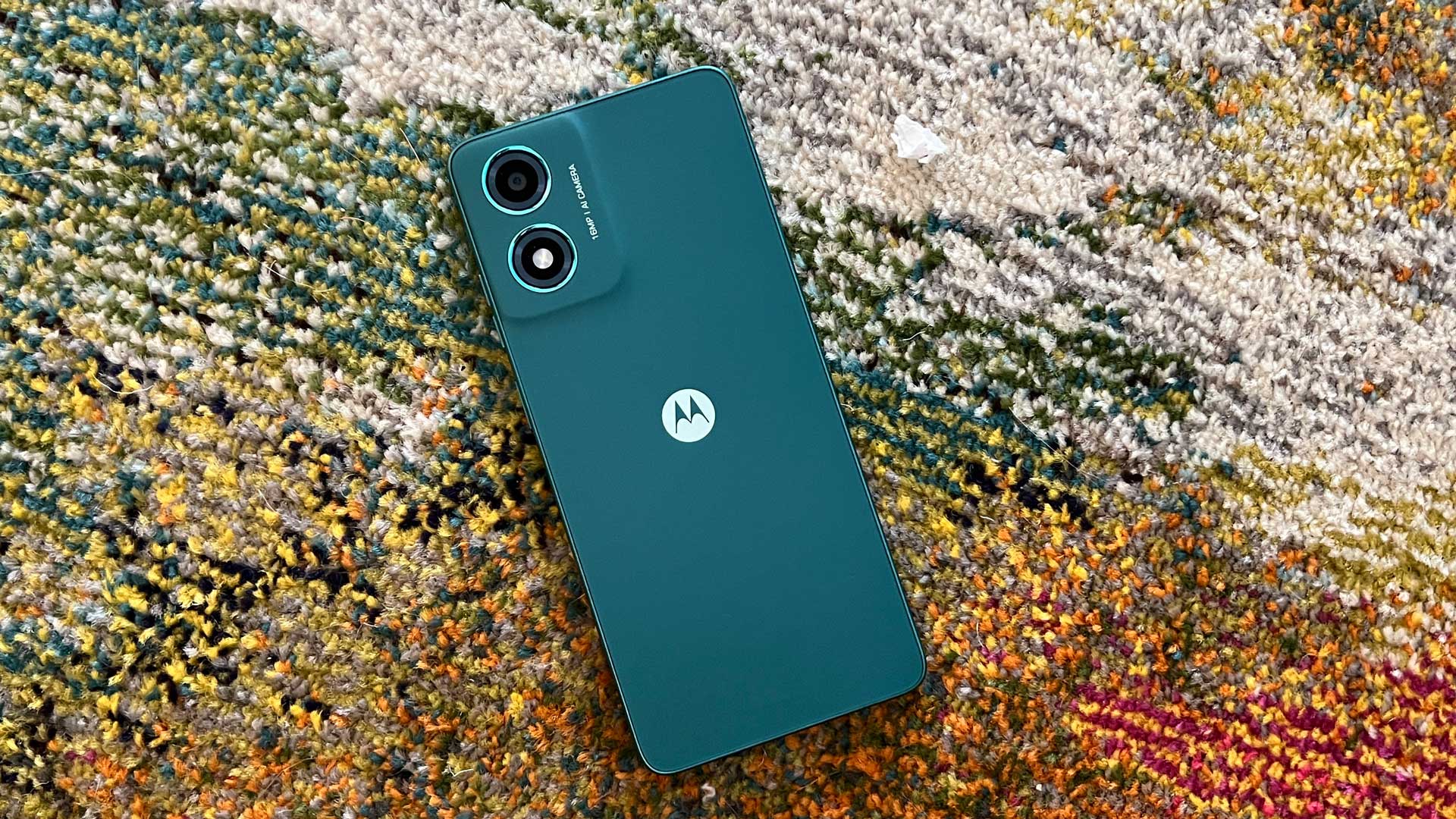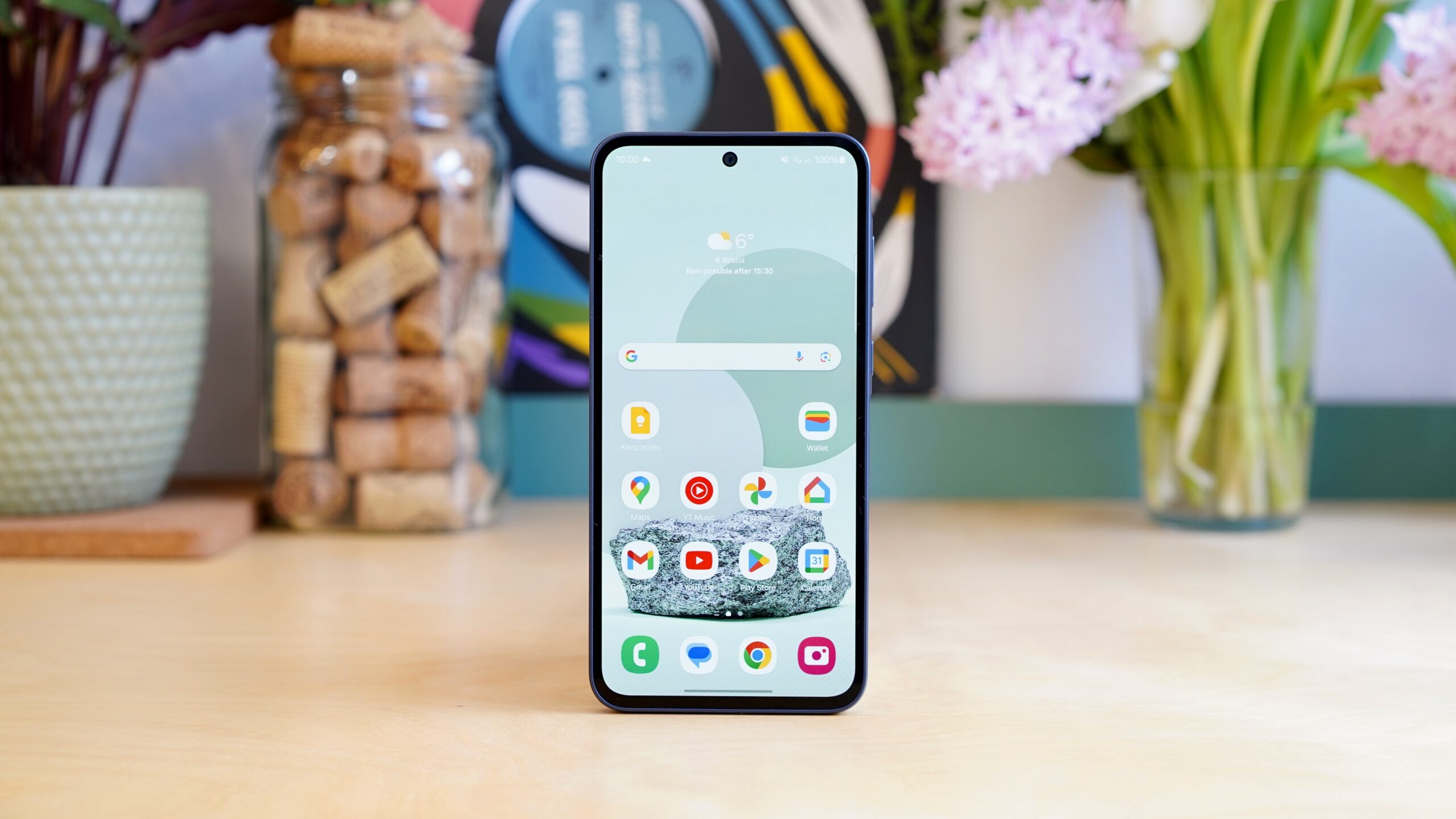Xiaomi Redmi Note 11 Pro 5G Review
A notable downgrade in some key areas
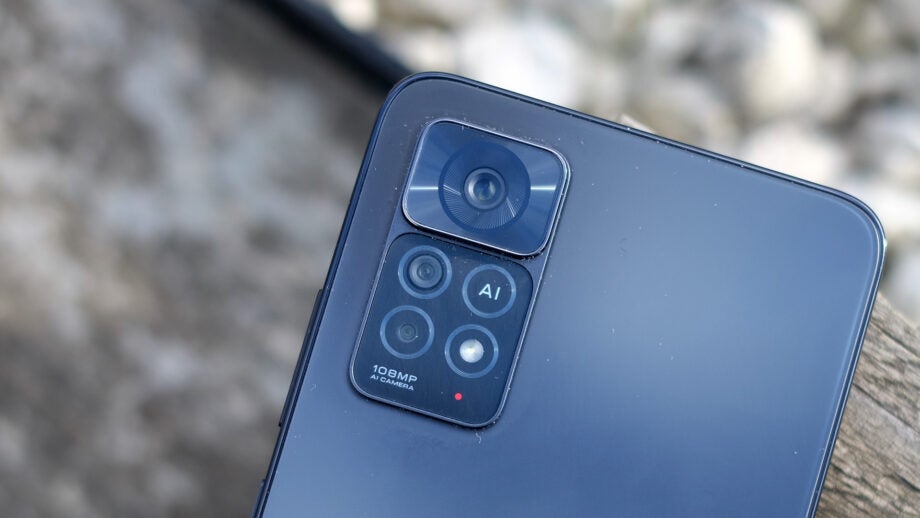
Verdict
The Note 11 Pro 5G comes with above average speakers, display quality and build. However, the handset’s cameras aren’t as good as those included with its predecessor, plus performance doesn’t match up to that of some other Xiaomi phones at the same level.
Pros
- Decent battery life
- Strong display
- Good stereo speakers
Cons
- Cameras downgraded since last year
- Proactive power management closes down your apps
- Has a budget 5G processor
- Video limited to 1080p/30fps
Availability
- UKTBC
- USARRP: $329.99
- EuropeRRP: €299.99
- Canadaunavailable
- Australiaunavailable
Key Features
- Stereo speakersPunchy-sounding stereo speakers are a major benefit here, whether you’re listening to podcasts, watching YouTube or playing games on-the-go
- 67W chargingWhile this isn’t Xiaomi’s fastest charging available, the Xiaomi Redmi Note 11 Pro 5G’s support for 67W is handy for quick top-ups; it’s a cut above Samsung’s offering
- 120Hz OLED screenRapid refresh rate, good maximum brightness and OLED’s famous contrast and colour means this phone has one of the best displays available at the price
Introduction
The Xiaomi Redmi 11 Pro 5G is the successor to what might just be my favourite phone of last year, the Redmi Note 10 Pro.
This is a solid handset, but it stands little chance of becoming one of the best phones of 2022. The Redmi Note 11 Pro gains 5G but has a lower-grade processor, all things considered, and a significantly weaker camera array.
Xiaomi launched several stand-out affordable phones last year, such as the surprisingly powerful Poco X3 Pro and the glass-reared Redmi Note 10 Pro, with its low-bloat camera array. The Xiaomi Redmi Note 11 Pro 5G has little of this “stand out” character.
It excels in display tech, with the 6.67-inch 120Hz OLED unlikely to be significantly bettered at this price.
And that price? It costs $329 in the US and €299 in Europe, likely to equate to at least £279 in the UK. This is for the model that comes with 64GB storage; the 128GB version reviewed is likely to cost a little more.
It’s a solid deal, then, and there are plenty of things to like here. However, it does feel somewhat as if much of Xiaomi’s budget dynamism is draining away, particularly when on the inside the Redmi Note 11 Pro 5G is near-identical to the Xiaomi Poco X4 Pro.
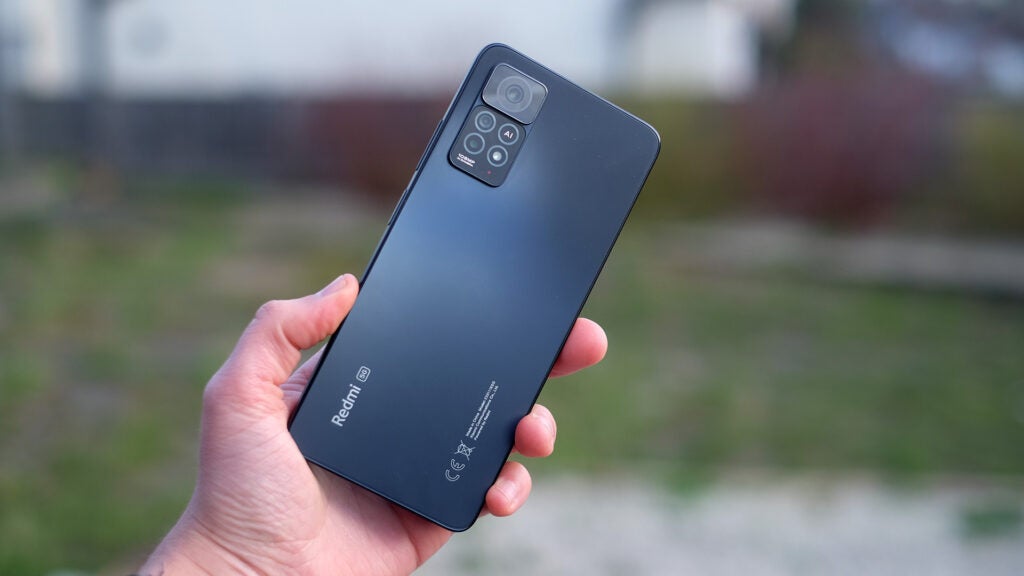
Design
- Flat glass back
- Large, but not excessively chunky
- Good stereo speakers
The Redmi Note 11 Pro 5G looks quite different to its predecessor – and just about every other recent budget Xiaomi phone. Last-generation comparable Androids were large, curvy slabs that felt big. Too big for some, perhaps, but largely a good fit for an audience looking for a big-screen Android offering better value than a more crowd-pleasing Samsung.
Curves are out this year, replaced by straighter sides and a boxier feel. While I prefer the Redmi Note 10 Pro’s curved glass rear, the Redmi Note 11 Pro 5G does feel slightly trimmer than some budget Xiaomi phones thanks to its fairly svelte 8.1mm thickness.
It’s also good to see that, unlike just about every other manufacturer, Xiaomi can still produce glass phones at this price. The Redmi Note 11 Pro 5G has a Gorilla Glass 5 display cover and an unspecified flat glass rear panel.
When a glass type isn’t specified you can be sure it’s a cheaper, less resilient type than the recent generation of Gorilla Glass. Still, the back of this device feels significantly better than the plastic rear of the step-down Redmi Note 11 – the “non Pro” version.
The rear glass has a smooth matte finish, with a subtle light-reactive layer – although Xiaomi’s photos suggest the blue version is a little more eye-catching.
The sides are plastic, but the Redmi Note 11 Pro 5G build is all-round a cut above most of the competition. Xiaomi includes a case in the box, and you should probably use it; but it will hide the good-looking rear finish.
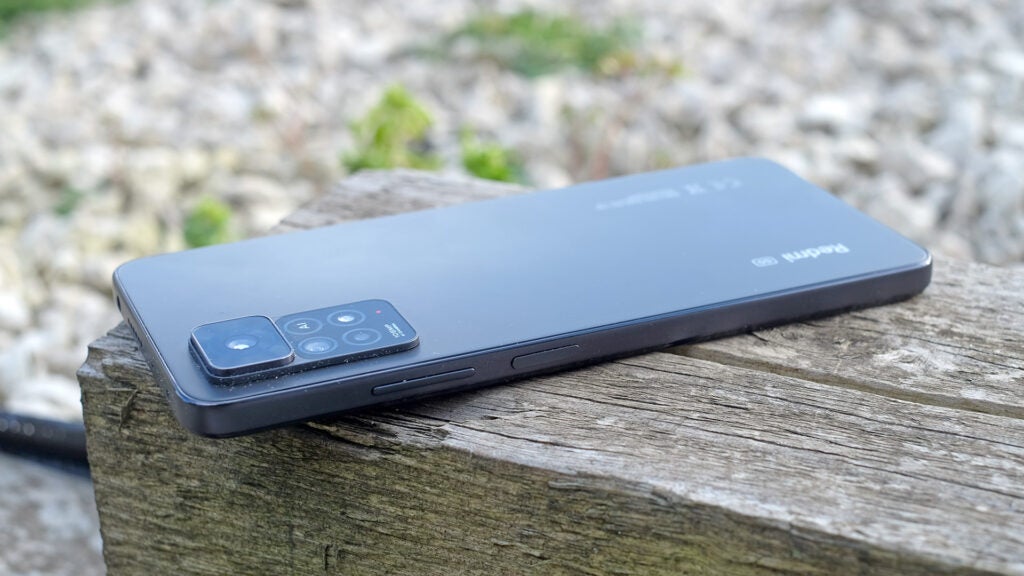
There’s no factory-applied screen protector this time around, which is a shame. While these are always simple sheets of plastic, they do at least avoid you accidentally scratching the screen before you’ve even decided whether to go naked or play it safe with a screen protector.
Other parts to the Redmi Note 11 Pro 5G are typical Xiaomi. The phone comes with very good stereo speakers for a budget Android. Maximum volume is strong, the tone isn’t thin, and including drivers at the bottom and above the screen is always a benefit for landscape video and gaming.
An IR blaster sits on the top, too. The Redmi Note 11 Pro 5G can function as a universal remote, using the preinstalled Mi Remote app. There’s a microSD card slot in the SIM tray, but some of you may be slightly disappointed to learn that this blocks the second SIM. You can either use two SIMs or one SIM and a memory card.
Water/dust-resistance is IP53, sufficient to guard against a little rain – but not submersion in water. It’s typically solid stuff of the type I expect to see from a Xiaomi device at this level, and the speakers are a genuine highlight of the phone.
The Redmi Note 11 Pro 5G display is probably its top feature, despite being extremely similar to the screen in last-generation’s Note 10 Pro.
It’s a 6.67-inch OLED panel with a 2400 x 1080 resolution and a maximum refresh rate of 120Hz. In person, the Redmi Note 11 Pro 5G display compares at least fairly well with any phone at any price.
Want the ultra-rich colour OLED is renowned for? Well, you can have it in the Saturated screen mode. Colour can be tamed for more relaxed-looking tones by opting for the Standard mode.
The peerless contrast of OLED is clear to see when you watch videos late at night or in dimmed rooms. There’s none of the black luminance of the still-excellent IPS-level LCDs used in some other affordable Xiaomi phones, no visible backlight glow when the screen is viewed off-axis.
Xiaomi says the Redmi Note 11 Pro 5G screen’s peak brightness is a flagship-grade 1200 nits. However, what you’ll see in practice is around 700 nits, the claim for the High Brightness Mode (HBM).
In direct sunlight the calibration of the screen shifts to improve visibility, playing with colour and contrast for the best result. It’s a great feature to have in a lower-cost phone.
There’s no dynamic refresh rate here, however. After using the Developer Options mode to get a read-out of the refresh rate, the Redmi Note 11 Pro 5G appears to use 120Hz consistently apart from in apps that don’t support 120Hz, then dropping to 60Hz. Some higher-end OLED panels can dynamically shift refresh rates to improve battery life.
The Redmi Note 11 Pro 5G also appears to lack support for HDR video. HDR clips on YouTube will play on the old Note 10 Pro, but only run at standard dynamic range on the new phone.
Performance
- Weak, if efficient, processor
- Not great for gaming
- … at least it has 5G
The Redmi Note 11 Pro 5G runs Android 11 and the MIUI interface. It comes with a few extra apps installed, including a small handful of games that few owners are likely to want. But you can uninstall them in a minute or two.
If you own a Xiaomi from the past couple of years, the drop-down menu style is something new to which you’ll have to become accustomed. Older Redmi phones make you swipe down once for notifications, twice for feature toggles. The new style sees you swipe from the left or right of the screen to choose which you want.
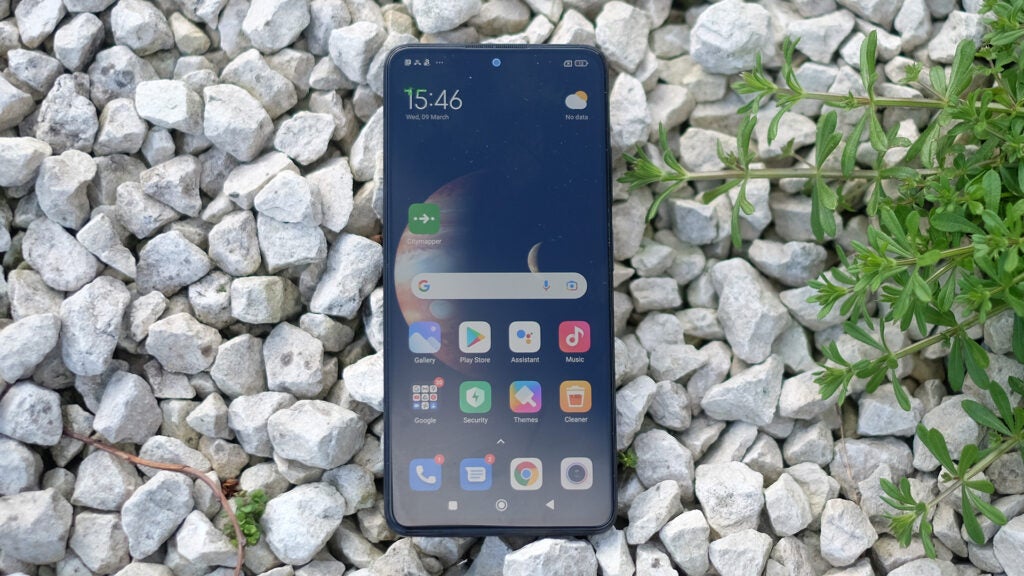
All other parts of the Redmi Note 11 Pro 5G interface are business as usual. Xiaomi lets you choose whether or not to use an app drawer. Classic soft keys and gesture navigation are options, too.
At the phone’s centre, you’ll find a Snapdragon 695 processor. It’s one of the latest in a growing line of Qualcomm chipsets intended to let manufacturers produce 5G phones at a reasonable cost.
It’s an upgrade over the last-generation Snapdragon 732G that featured in the Note 10 Pro in some cases, a downgrade in others – letting us once again see the “price of 5G” in action. In Geekbench 5, the Note 11 Pro 5G scores 2014 points to the 1500 of the last generation. It’s a healthy gain, thanks to a switch from 4-series Kryo cores to 6-series ones.
There’s much less of an improvement in the GPU, its 3DMark Wild Life score of 1213 representing a less than 10% increase over the last generation. As such, the Redmi Note 11 Pro 5G is miles behind performance-led Xiaomi models such as the Poco X3 Pro and Poco F3.
Right now, you can buy the Poco F3 for less than the Redmi Note 11 Pro 5G, and the Snapdragon 870 will absolutely flatten the Snapdragon 695 for gaming.
The Redmi Note 11 Pro 5G can still play demanding games well enough, though. But Fortnite is limited to basic graphics settings at 30fps, and titles that actually let you use settings outside the capability of your phone – ARK: Survival Evolved, for example – will chug if you make the visuals look too nice.
In practice the two generations, the Note 10 Pro and Note 11 Pro, appear to be on a level in terms of performance. Day-to-day navigation is fairly swift, but with sub-flagship app-load speeds. And gaming performance is mediocre but, ultimately, perfectly good enough for many people’s needs.
So why, in some senses, is the Snapdragon 695 worse than the Snapdragon 732G – despite delivering better CPU performance and marginally better GPU power? Since it introduces restrictions not seen in the previous generation. No HDR support in YouTube? That appears to be a Snapdragon-related cut.
The camera’s ISP, image signal processor, is also inferior. As we’ll cover in the camera section, it results in far worse image quality than its predecessor and a hard limit of 1080p/30fps video recording. These factors considered, the Snapdragon 695 starts to look like a budget processor rather than a mid-range unit.
The Redmi Note 11 Pro 5G also has one irritating habit that I didn’t notice in the Note 10 Pro. It closes down apps running in the background, even if they have active processes, such as audio streaming, running. This is usually the result of over-enthusiastic power management, the phone identifying an app as a power-sapping pest.
I think this is likely the case here, too; but even after diving into the menus and singling out these audio apps as ones to be ignored by the battery management software, the problem wasn’t entirely resolved.
Camera
- Triple rear camera array
- Disappointing camera processing
- Produces dull images too often
The Redmi Note 11 Pro 5G has three rear cameras, a 108-megapixel main camera that uses the Samsung HM2 sensor, a basic 8-megapixel ultra-wide and a remedial 2-megapixel macro.
As with all macro cameras of this resolution, you might as well pretend it isn’t there. Image quality is poor, and Xiaomi doesn’t seem too proud of it either. The macro shortcut doesn’t appear in the main mode selection screen; it’s in the less-used settings area, where you switch gridlines on and off, or select a delay before the shutter fires.
The macro makes up the numbers. Plenty of affordable phones have these filler cameras, but it sticks out here because the Note 10 Pro had a far better 5-megapixel telemacro with autofocus, which is far more useful.
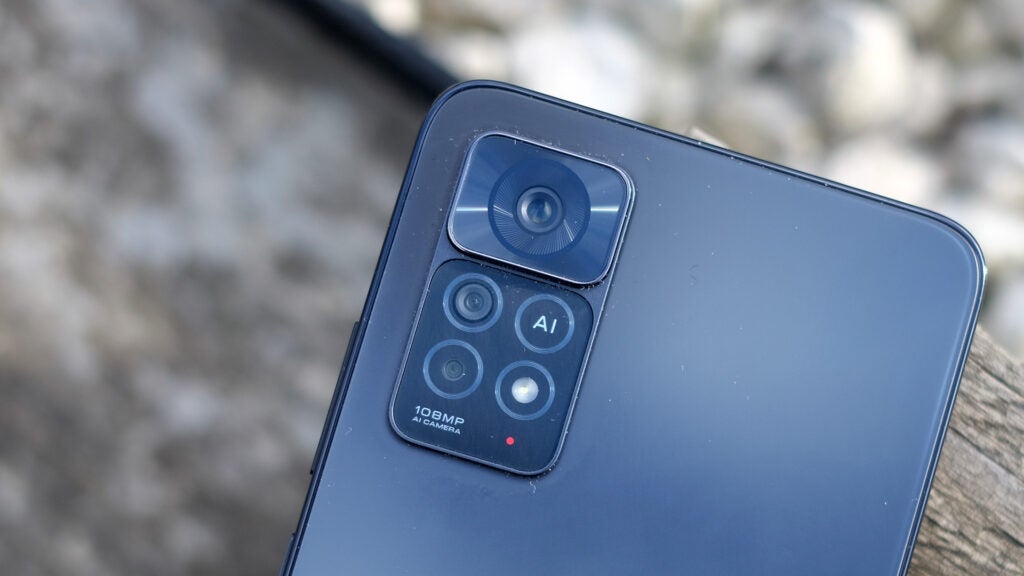
The ultra-wide 8-megapixel camera is serviceable – but, again, delivers a big drop in quality from the 16-megapixel ultra-wide of the Note 10 Pro. Its images are softer in good lighting, and both less detailed and noisier in poor lighting; there’s far more of a drop off in integrity at the corners of the frame in the Note 11 Pro 5G, too. Where the Note 10 Pro 5G had a notably good selection of secondary cameras, plus a tertiary depth sensor that the new phone lacks, the Note 11 Pro 5G seems bog-standard for its class.
Unfortunately, this carries through into the main camera, even though the two phones use the same 108-megapixel Samsung HM2 sensor. It can take good shots, sure, but side-by-side with those of the Note 10 Pro, the 11-series’s images are noisier and less detailed. This becomes all the more obvious at the edges of the frame.
Brickwork in houses that looks quite clean and well defined through the lens of the older camera is fuzzy and fizzy in the Note 11 Pro 5G, at times obliterating the distinction between one brick and another. These sorts of differences are the type I might expect to see when comparing a phone with a larger sensor with that of a smaller one. But here the issues must be a result of the processing, given that both phones use the same sensor line.
This nudges the Redmi Note 11 Pro 5G closer to the image quality of Xiaomi phones that on paper place much less importance on camera quality – the Poco X3 Pro, for example.
Half-failing the pixel peeping test is one thing, but the HDR performance also lands below expectations regularly. Some degree of HDR processing is used – in the way I shoot photo, at least – with almost every single photo. It’s there to avoid overexposed blocks of white in clouds, and dull, obfuscated shadow areas.
Too often during testing I’ve seen images with overexposed sections, dull-looking foregrounds, and mid-tones where detail has been lost in the fuzz. This doesn’t always happen; I have also seen the Redmi Note 11 Pro 5G improve scenes dramatically with HDR. But it’s as if dynamic range enhancement has too few gears from which to select, and the phone doesn’t always pick the right one. Auto HDR isn’t smart nor effective enough.

The odd thing is that you can often achieve better results by using the HDR mode over Auto HDR. Noise is reduced, detail often improves, and dynamic range increases. However, it isn’t the ideal solution. Auto HDR modes exist because sometimes images will look better without full-bore HDR processing. I’ve been capturing images in both modes for any scenes I might want to share with friends, seeing which produces the better result – which isn’t ideal.
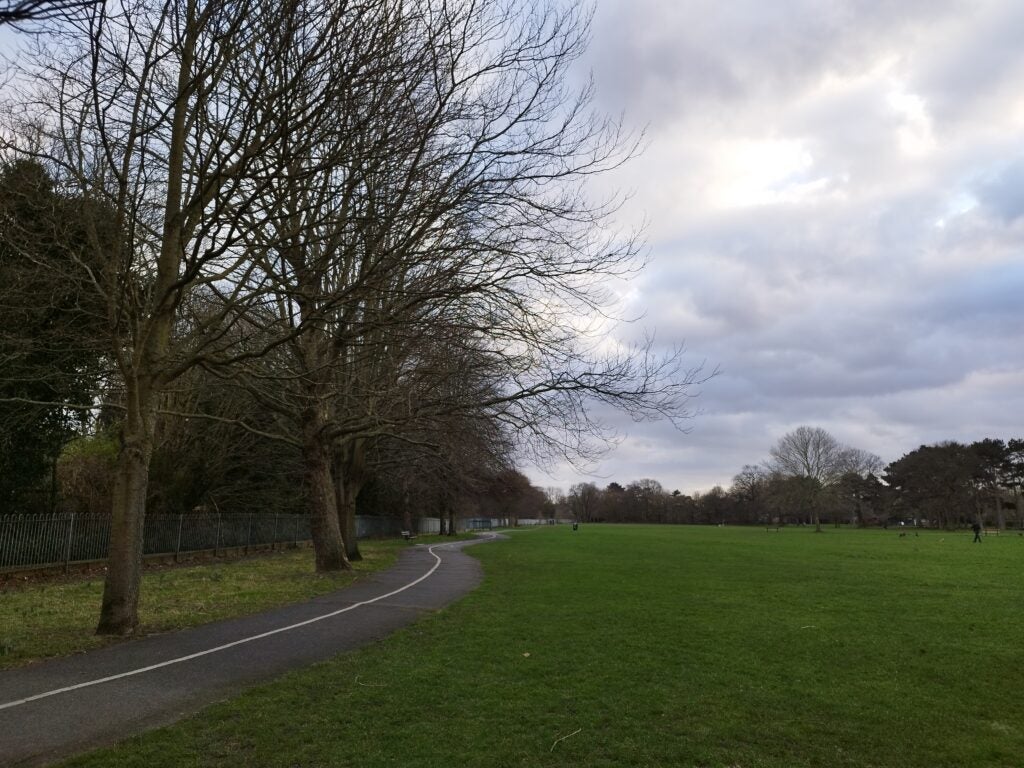
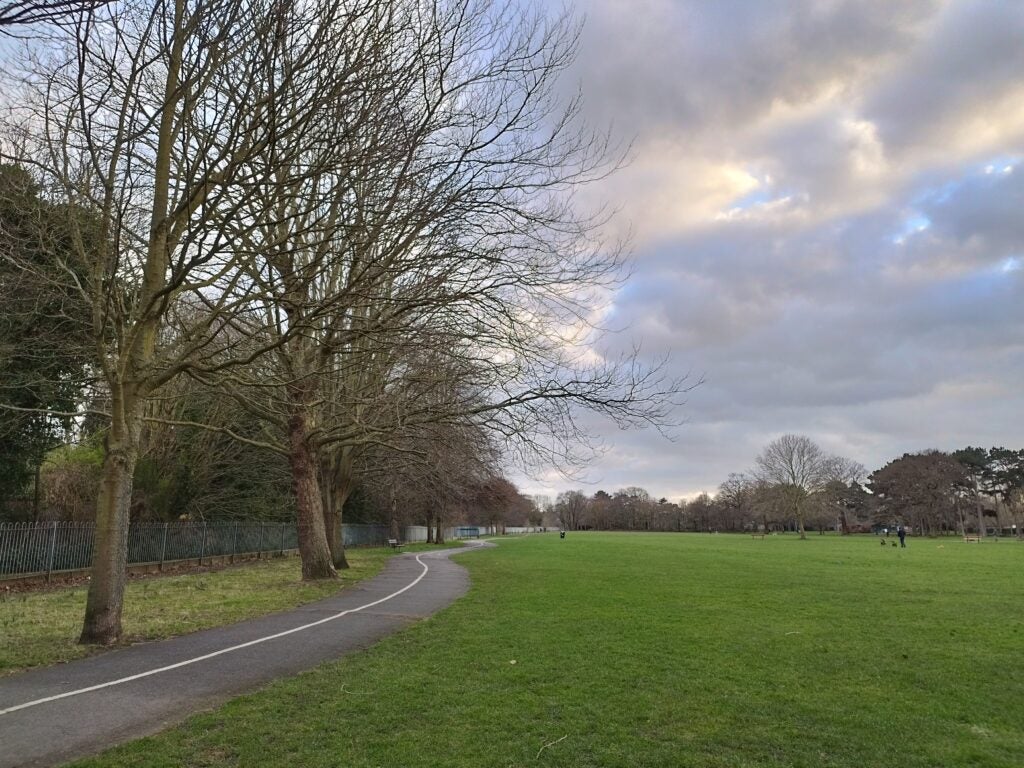
Thankfully, the Night mode here does have a worthwhile effect on photo quality. Images in very low light look poor when shot in Auto. The Night setting takes roughly 1.5-2 seconds to capture an image, reducing noise quite significantly. Colour improves and increased dynamic range leads to superior detail, too.
While we’re not anywhere close to affordable low-light king, the Google Pixel 5a, the Redmi Note 11 Pro 5G’s effort does at least stack up okay next to its similarly priced peers.
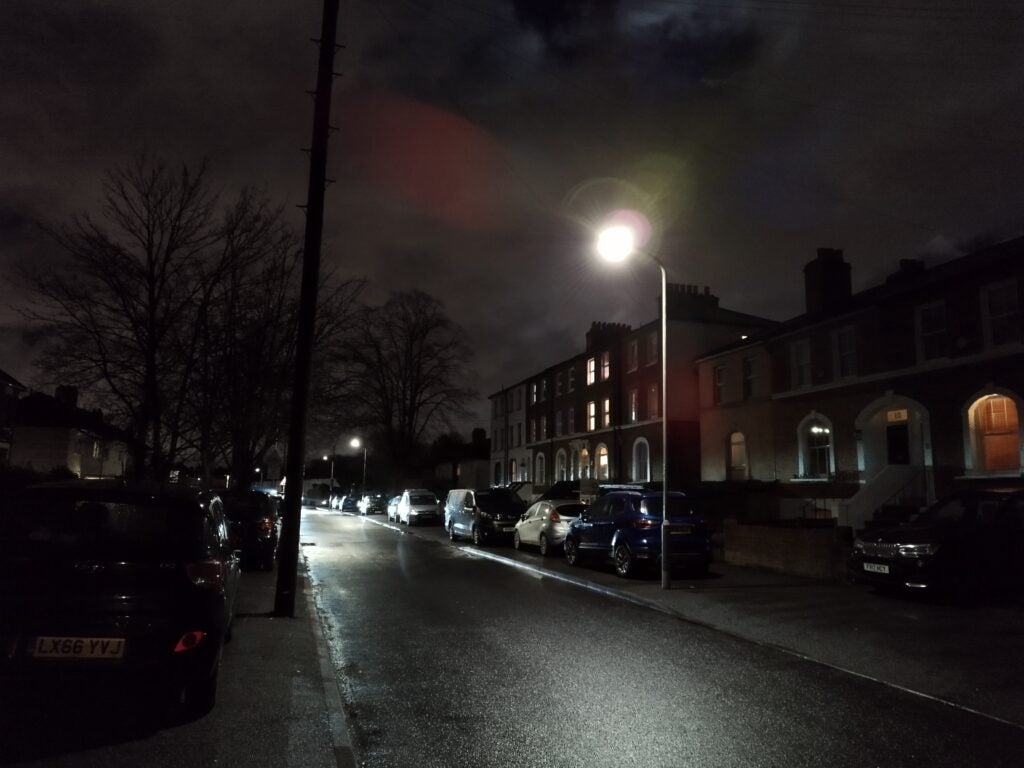
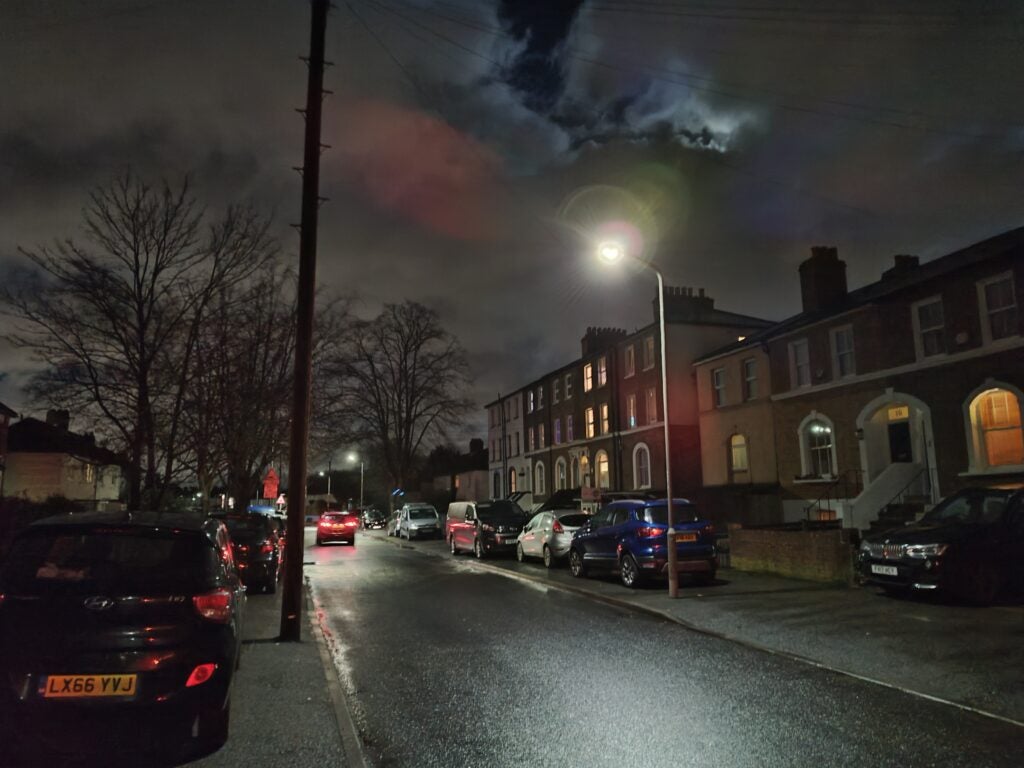
Video is below average, however. Maximum shooting resolution is 1080p at 30 frames per second. Footage looks shaky even at this level, so if you want a phone to shoot a lot of video, this isn’t it.
The Redmi Note 11 Pro 5G’s selfie camera has a 16-megapixel sensor that, after all the above complaining, does a perfectly respectable job. It can capture a decent amount of facial detail in good lighting, and doesn’t get embarrassingly soft indoors, either. Do pay attention to the facial smoothing, though – by default our phone was set to smooth out skin and make your face look thinner.
Battery Life
- Good battery life, particularly at 60Hz refresh
- Fast charging
- Some strange charging behaviour as you near 100%
Ultimately, this phone’s camera and processor are a tad disappointing considering how much better other Xiaomi handsets at a similar price perform in these areas. However, there are no such issues for battery life.
There are two options here. In the 120Hz mode, the Redmi Note 11 Pro 5G should comfortably see you through a full day of moderately enthusiastic use, with some YouTube streaming and hours of audio streaming.
Typically I found that there wasn’t masses of charge remaining by the end of a day, perhaps 15-20%, but it was sufficient for me to go with the decision to mostly use the phone at its 120Hz mode. It really helps the smoothness of scrolling, and is difficult to give up once you’ve started down that road.
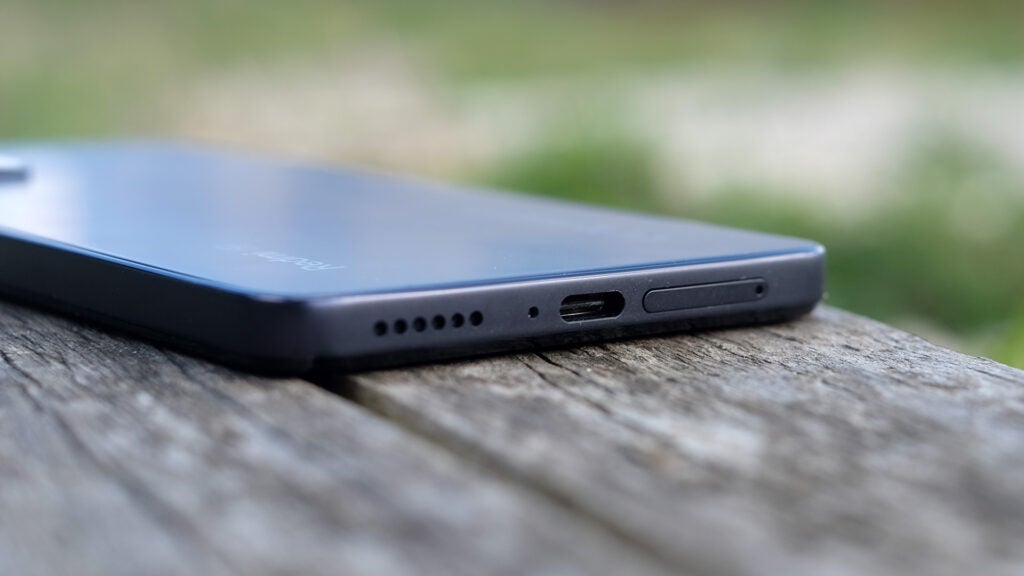
Battery life in the 60Hz mode is noticeably better, enough to get you to 30-plus per cent residual charge by bed time with the same kind of moderate use, without periods of battery-draining gaming.
There is a way to avoid having to make this decision, though. Rely on a quick top-up when you need the Redmi Note 11 Pro 5G to last through a night out instead. The phone supports 67W charging, which is much better than the 33W speeds of its predecessor.
Xiaomi says it can get you from flat to 50% in 15 minutes; a full charge takes 42 minutes. In our tests, we reached 48% in 15 minutes, which is close enough given it would hit 50% before the 16-minute mark.
It took a couple of minutes under an hour to get to full, but there may be an explanation. The phone’s screen kept on waking during charging, as the phone switched between “charging” and “fast charging” states – which seems like a bug. Even if the phone decides to switch to slower charging because of battery temperature, a sensible enough move, there’s no need to constantly wake the screen up to do so.
You don’t get wireless charging here, but it isn’t yet an expected feature at this level.
Latest deals
Should you buy it?
Price: This is a reasonably affordable 5G phone with several impressive exterior features such as a decent set of stereo speakers, a bold OLED screen, and a glass rear where most at this price are plastic.
Weak cameras: The Redmi Note 11 Pro 5G lacks some of the substance of recent Xiaomi hits. Its cameras are weaker than that of its predecessor, and while the processor handles general use just fine, it doesn’t come close in performance terms to some of the company’s more gaming-led Android handsets.
Final Thoughts
The Redmi Note 11 Pro 5G is a solid Android phone with a bunch of admirable features that improve your day-to-day experience. Its speakers are decent, charging is fast and battery life is particularly good in the 60Hz display mode. Add a great screen and the matte glass rear delivers a touch of class that’s often missing at this price.
However, the Redmi Note 11 Pro 5G lacks the ambition, the stand-out appeal, of some of Xiaomi’s last-gen phones. Its processor is far weaker than that of the Poco X3 Pro or Poco X3 GT, which becomes clear when playing more demanding games.
The camera is a significant downgrade compared to the last-gen Redmi Note 10 Pro, with weaker secondary cameras and poorer image quality from the main camera despite the use of the same hardware.
How we test
We test every mobile phone we review thoroughly. We use industry standard tests to compare features properly and we use the phone as our main device over the review period. We’ll always tell you what we find and we never, ever, accept money to review a product.
Used as our main handset during test period
Camera tested in variety of situations with all modes
Tested with synthetic benchmarks and real world use
FAQs
It comes with IP53 water-resistance, a basic form of waterproofing that keeps the phone safe in the rain.
Yes – unlike a higher-end phone, you can use either cabled or wireless headphones here.
It’s right there in the name. The phone supports 5G mobile internet; but check the supported bands, if you have specific needs.
Trusted Reviews test data
Full specs
All the most important specs for the Redmi Note 11 Pro and how they compare to the outgoing model.

